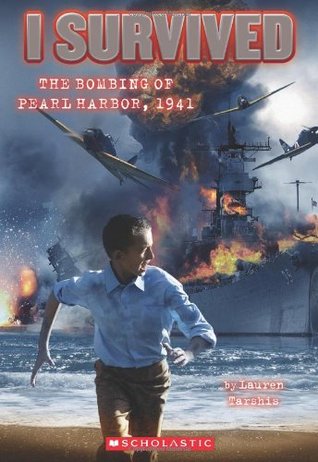*** Warning: This review contains spoilers!! ***
 This is the first book of the series that I've read in which I myself did not live through the event. So, there was more of a distance in reading this book than when reading about Hurricane Katrina or September 11th.
This is the first book of the series that I've read in which I myself did not live through the event. So, there was more of a distance in reading this book than when reading about Hurricane Katrina or September 11th.
The first thing I noticed is that the protagonist is, yet again, a young boy. I took a cursory glance at the covers of the other books in the series we happen to have, and they do appear to all feature boys. I'll have to read them all to be sure, but at this point, I do wonder... Since each book tells a different story, why not spotlight a girl every now and then?
The second thing I noticed is that the main character in this book, Danny, is a Caucasian boy who recently moved to Hawaii from New York City. I don't have anything against Danny, but why not make the book about a native Hawaiian, since the story takes place in Hawaii, after all? Danny's neighbor is little Aki, a Japanese boy. Why couldn't the main character have been Aki's older brother?
The thing about reading series books is that you can't help but compare them to each other. In the other two I Survived books I've read, the boys just happened to find themselves in the middle of the event. They didn't go running carelessly into danger; they exercised good judgment, and just did their best, given the situation. In this book, for the first time, the main character actually leaves a place of safety and goes running alone towards trouble. Sure, Danny probably wasn't thinking straight, but you'd think Mrs. Sudo would be a little more forceful in insisting that Danny stay put.
The part about Danny seeing the face of the pilot in a plane was a bit over-the-top dramatic for me. It's clear the author wanted the reader to know that that's just how close the planes got to land, but it almost seemed as if she had Danny running into the middle of the bombing just to set up that detail.
I was actually quite impressed that the book went beyond the events of Pearl Harbor and touched upon the treatment of Japanese-Americans that followed (even mentioning the Japanese internment in one of the afterwords). However, I was then taken aback by the implication that a gangster in New York City could get a Japanese-American released from prison in Hawaii. I mean, what? The book admits that maybe the gangster had nothing to do with the release, but then, we are left wondering what made the police finally release Mr. Sudo, since they believed they had circumstantial evidence against him.
In the end, I appreciated the happy ending. I don't know if that's just part of the M.O. for these books, but I have to admit, after the fear and terror of the event itself, it's nice to see a positive snapshot of normalcy.
This book ends with a "Pearl Harbor Time Line", some questions and answers about Pearl Harbor, a list of resources for additional reading, and a brief note from the author.


No comments:
Post a Comment